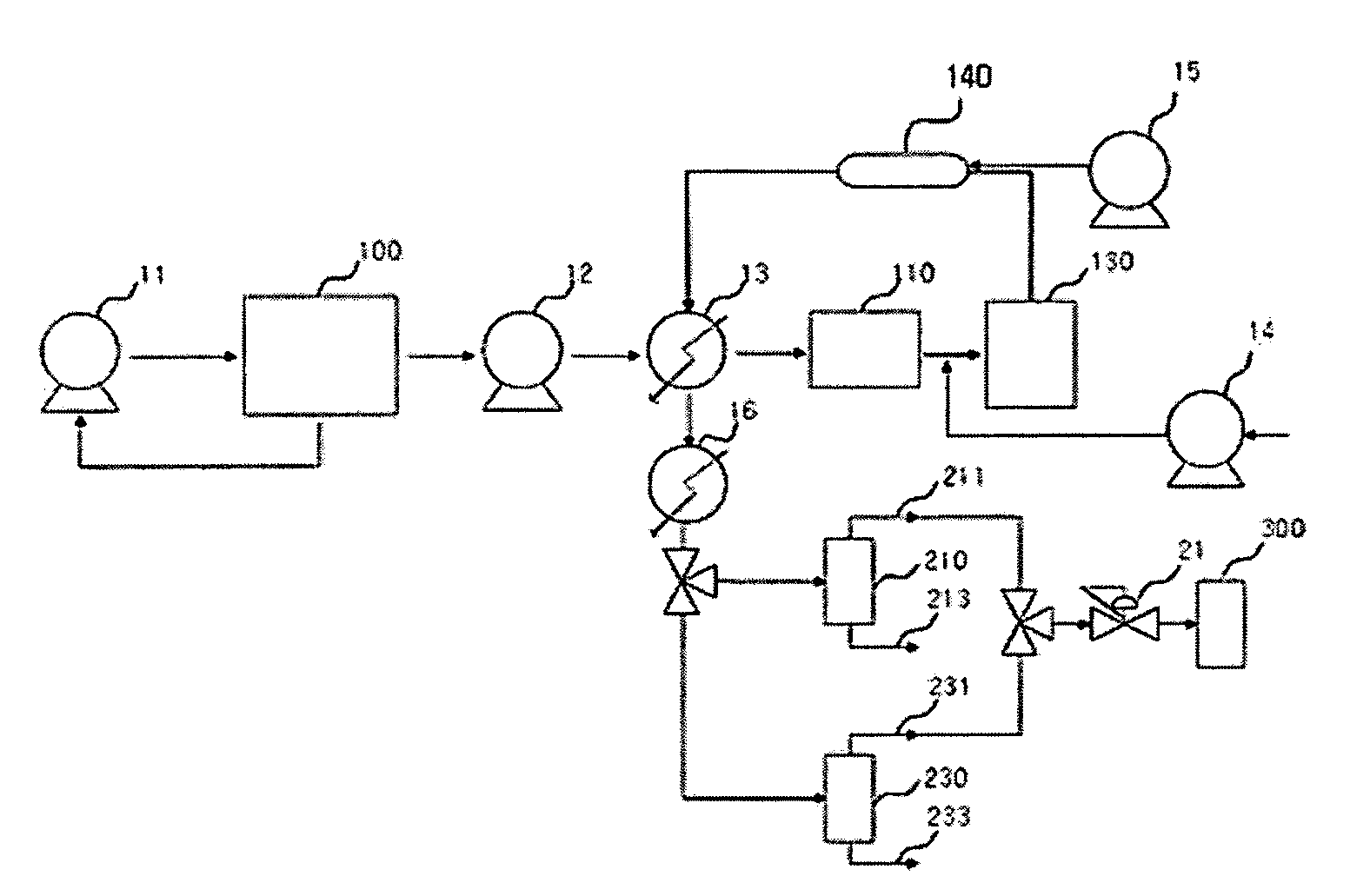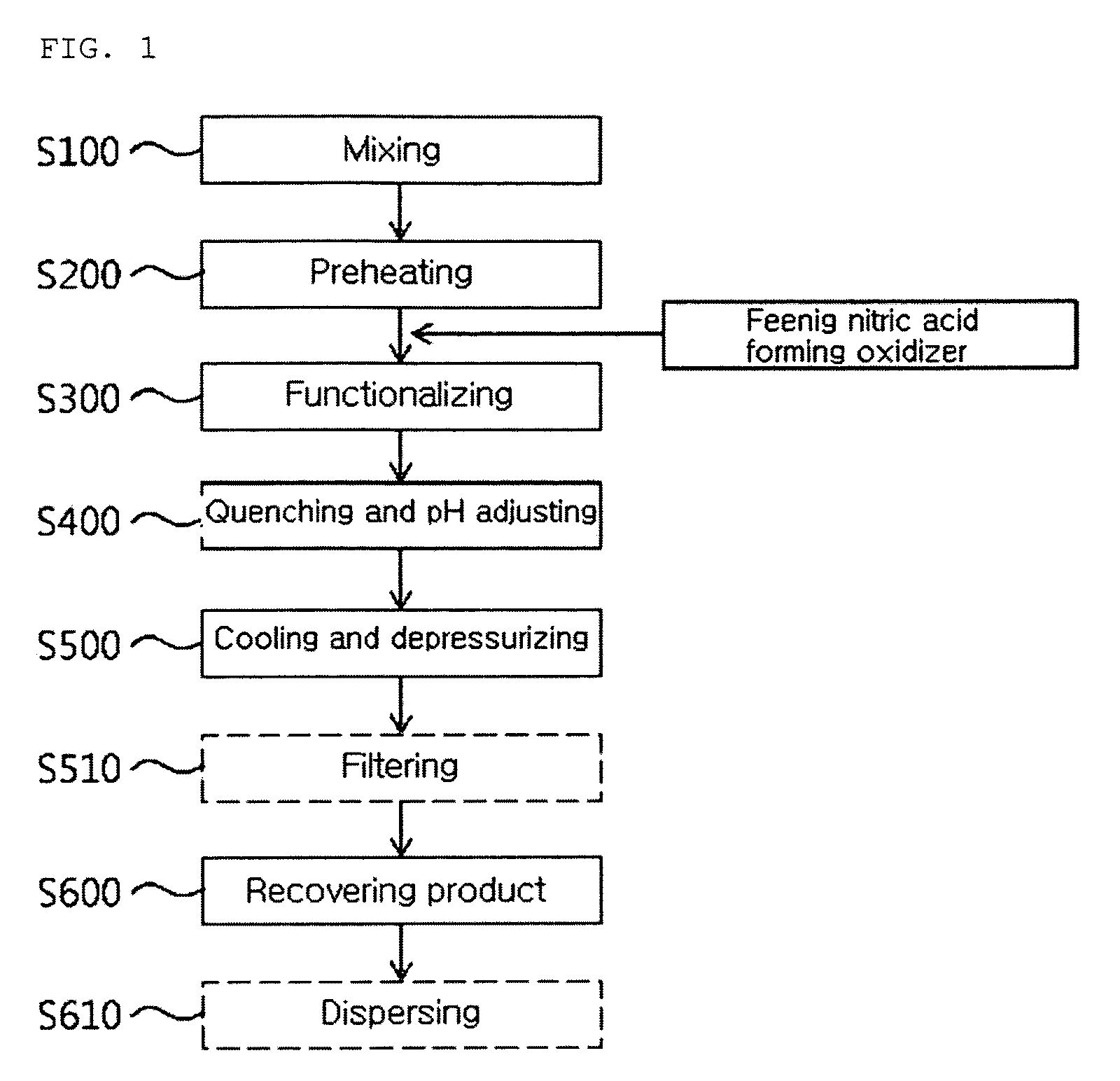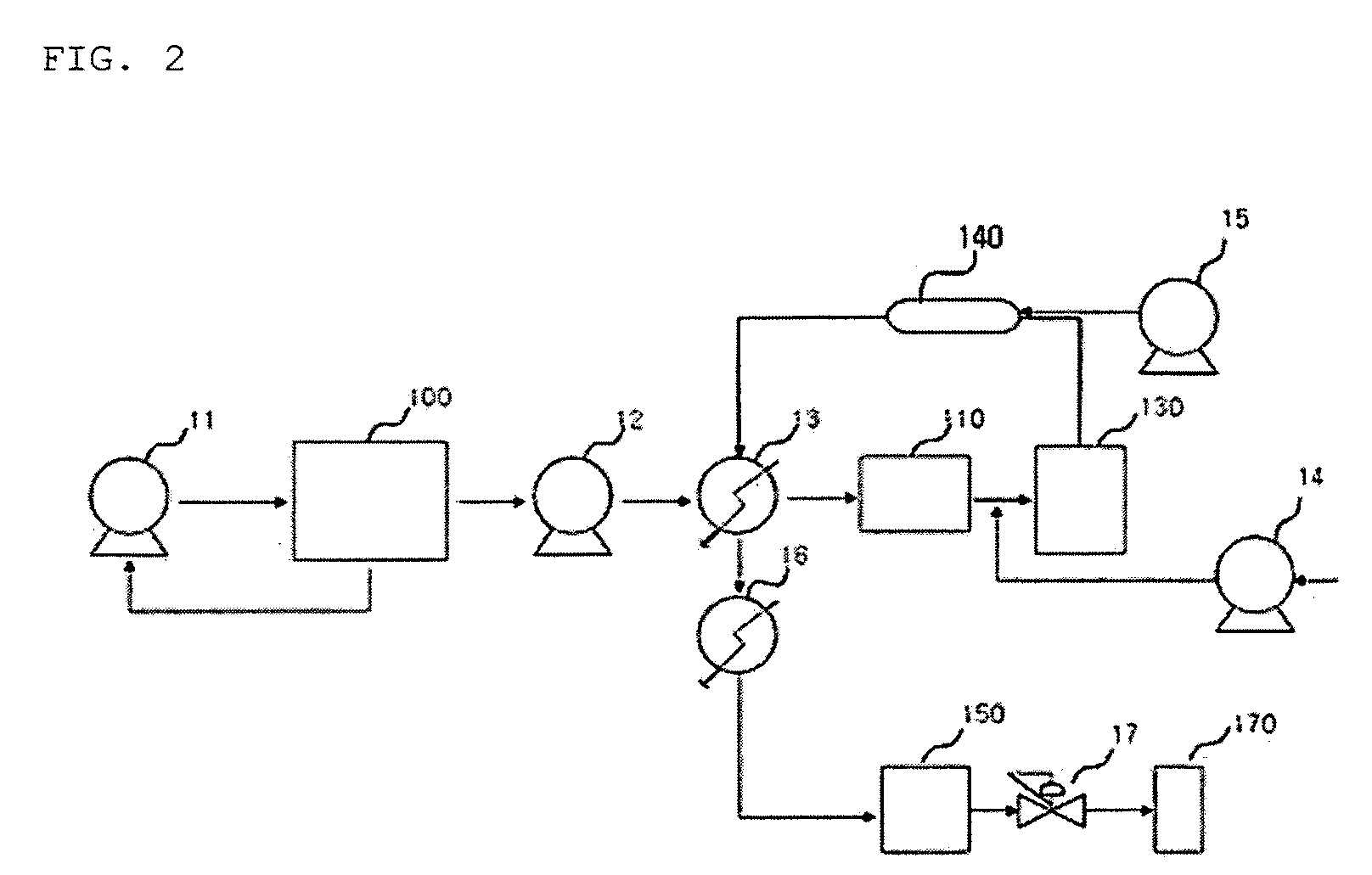Continuous method and apparatus for functionalizing carbon nanotube
- Summary
- Abstract
- Description
- Claims
- Application Information
AI Technical Summary
Benefits of technology
Problems solved by technology
Method used
Image
Examples
example 1
[0081]While a multi-walled carbon nanotube of 10 g and a distilled water of 977.8 g were put in a mixing and feeding part 100 and then agitated, nitromethane of 12.2 g (0.2M) is added thereto and they were circulated by a circulation pump 11, such that a CNT solution including the nitro compound was prepared. After the CNT solution was put to the preheater 110 under a flow rate of 30 g / min by a high-pressure feeding pump 12, the CNT solution was preheated into a temperature of 220 to 260° C. by a heat exchanger 13. Thereafter, oxygen in a gas state compressed into 245 to 252 atm formed a CNT mixture mixed with the CNT solution at a flow rate of 0.4 g / min at a front end of a functionalizing reactor 130.
[0082]The CNT mixture was fed into the functionalizing reactor 130 in a supercritical water state of a temperature of 330 to 360° C. and 230 to 250 atm and the oxygen reacted with the nitromethane in the CNT mixture, such that the CNT is functionalized while instantly forming nitric ac...
example 2
[0085]After the functionalization was performed in the same manner as example 1, the filtering was performed by using the continuous apparatus for functionalizing including the filtering part of FIG. 2 and the high pressure filter having pore size of 0.001 to 10 μm, thereby obtaining the functionalized CNT product of 9.0 g
example 3
[0086]The functionalized CNT product of 8.9 g was obtained by performing the reaction in the same manner as Example 1 except for preheating into 350 to 370° C. and the functionalizing under the supercritical condition of a temperature of 400 to 450° C. and a pressure of 230 to 250 am.
PUM
 Login to View More
Login to View More Abstract
Description
Claims
Application Information
 Login to View More
Login to View More - R&D
- Intellectual Property
- Life Sciences
- Materials
- Tech Scout
- Unparalleled Data Quality
- Higher Quality Content
- 60% Fewer Hallucinations
Browse by: Latest US Patents, China's latest patents, Technical Efficacy Thesaurus, Application Domain, Technology Topic, Popular Technical Reports.
© 2025 PatSnap. All rights reserved.Legal|Privacy policy|Modern Slavery Act Transparency Statement|Sitemap|About US| Contact US: help@patsnap.com



